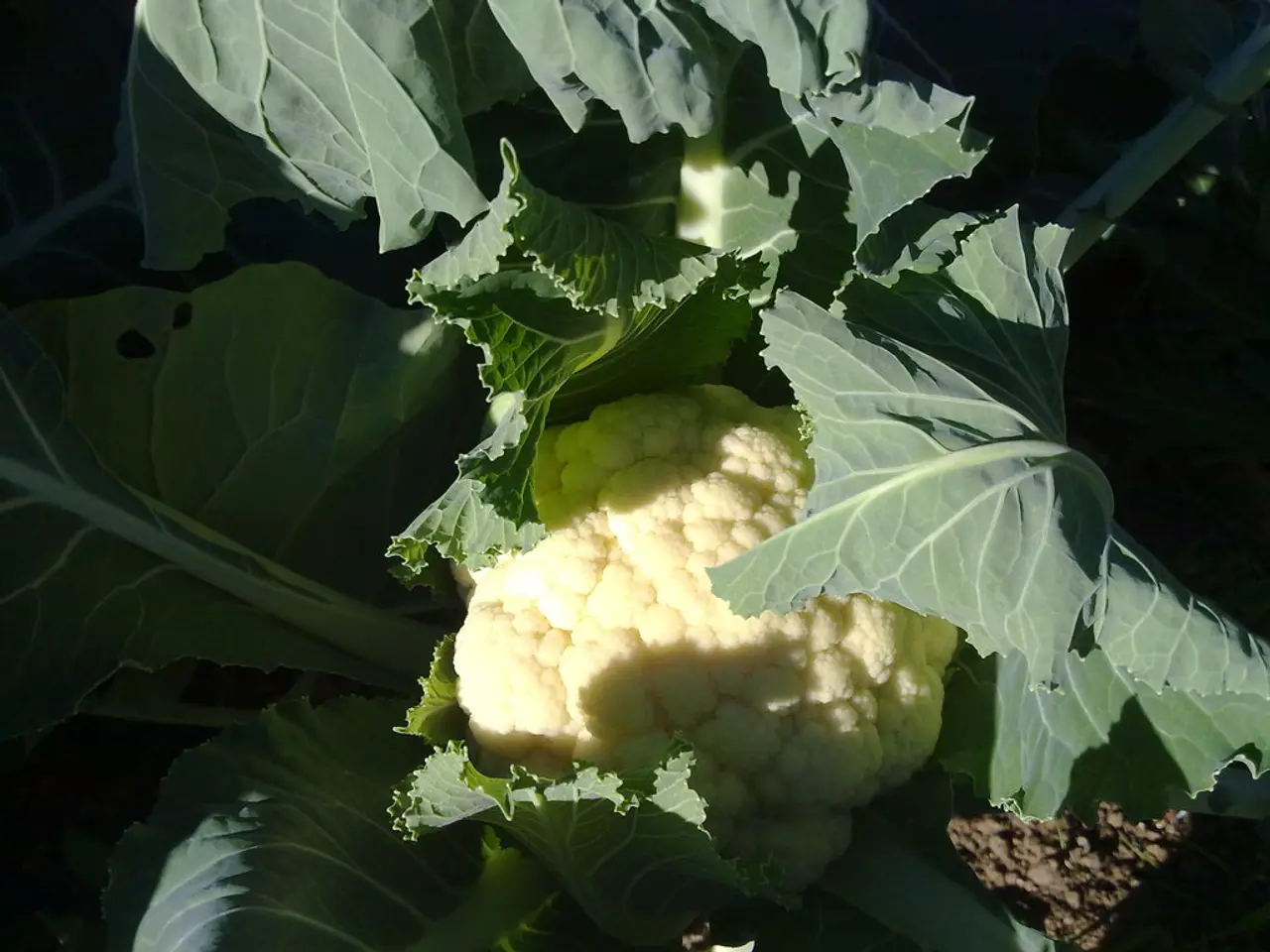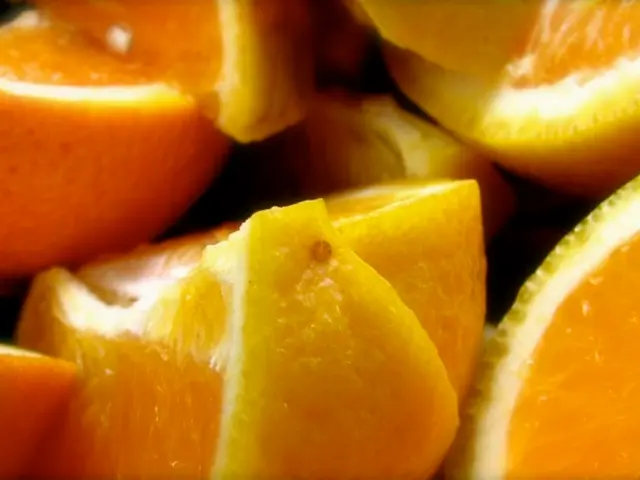Guide for Growing Cauliflower: A Simple and Rewarding Venture
Cauliflower, a versatile vegetable with numerous health benefits, can be successfully grown at home with the right knowledge and care. This guide will walk you through the essential steps to ensure a bountiful harvest, from understanding varieties to planting windows and companion planting.
Essential Practices for Successful Cauliflower Harvests
Proper cultural practices play a significant role in eliminating most cauliflower problems. Knowing how to identify and treat issues is crucial for successful harvests.
Feeding Programme
An organic feeding program is essential for nourishing your cauliflower. This includes base feeding, side dressing, and a pre-heading boost with high-potash liquid feed.
Blanching
Blanching cauliflower heads creates a pristine white colour, improves texture and flavour, and prevents yellow-green discolouration that occurs with sun exposure. Start the process when curds reach 5-8cm in diameter and show a tight, white formation, typically 2-3 weeks before harvest.
Choosing the Right Variety for UK Growers
The UK's climate varies by region, and rainfall and soil water supply play a significant role in crop yield and success. Therefore, selecting varieties that tolerate the local climate's typical rainfall and cooler temperatures is essential.
Regional Climate Considerations in the UK
The UK generally has a uniform radiation and thermal climate, but rainfall and soil water supply vary by region and largely influence crop yield and success. Temperature and water availability impact cauliflower growth phases and efficiency.
Recommended Varieties for UK Sowings
Recent recommendations from growers sowing in the UK include varieties such as the Sicilian Violet cauliflower, which is specifically mentioned as currently planted. This variety is likely chosen for its adaptation to UK conditions and possibly for its distinctive flavour or appearance.
Specialty Varieties for Visual Appeal and Marketability
Purple cauliflower varieties like ‘Graffiti’ F1 are grown successfully and maintain their striking colour even after cooking, adding value for niche markets or home gardeners seeking variety.
Matching Variety Choice to Your Growing Experience Level
- Beginners: It is generally advisable to start with well-known, robust varieties such as those recommended in local seed catalogs or gardening resources like Sicilian Violet, which are proven through growers’ experience.
- Experienced Growers: May experiment with specialty varieties like ‘Graffiti’ F1 for a distinctive crop or varieties bred for disease resistance, yield, or specific culinary traits.
Planting Windows and Care Throughout the Season
- Plant new batches every 2-3 weeks from March through July for continuous harvests throughout the growing season.
- A structured planting schedule is essential for optimal germination rates and prevents common timing-related failures.
- Home-grown Cauliflower can deliver remarkable cost savings, with a single packet of seeds (typically £2-3) yielding 20-30 plants, each producing heads worth £1.50-2.50 at retail.
Companion Planting
Strategic companion planting improves cauliflower health by deterring pests, attracting beneficial insects, and optimising garden space usage. Celery improves flavour and repels cabbage white butterflies when grown alongside cauliflower. Nasturtiums serve as a trap crop for aphids and cabbage white butterflies. Dill attracts beneficial insects while deterring pests when grown near cauliflower. Marigolds repel various insects and add colour to the garden.
Soil Preparation and Care
Cauliflower demands a pH between 6.0 and 7.0, well-draining but moisture-retentive soil rich in organic matter. Essential soil amendments include well-rotted manure, garden compost, and bone meal. Apply 5-8cm of organic mulch around plants, keeping stems clear.
Pest Management
Catnip is a stronger pest deterrent than many chemical alternatives. Onions and garlic have natural fungicide properties and are beneficial companions for cauliflower.
Watering
Water Cauliflower consistently, providing 25mm of water per week, increasing to 40mm when heads develop.
Environmental Impact
Each cauliflower head grown eliminates packaging waste, transport emissions, and industrial farming's environmental footprint.
In summary, Sicilian Violet cauliflower is a solid all-round choice for UK growers due to its adaptability, while ‘Graffiti’ F1 suits those more experienced or looking to diversify with purple cauliflower. Choose varieties that have proven track records in your specific UK region's climate, and match variety choice to your growing experience level. Focus on proper timing and moisture management to optimize growth. Happy growing!
- A well-balanced organic feeding program is vital for nourishing cauliflower, consisting of base feeding, side dressing, and a pre-heading boost with high-potash liquid feed.
- Blanching cauliflower heads, at the right time, ensures a pristine white colour, improves texture and flavour, and prevents yellow-green discolouration.
- UK's climate regions influence crop yield and success, so selecting varieties that tolerate the typical rainfall and cooler temperatures for the local climate is essential.
- The Sicilian Violet cauliflower variety is recommended for UK growers due to its adaptability and resistance, making it an excellent option for beginners.
- Experienced UK growers can experiment with specialty varieties like ‘Graffiti’ F1 for a distinctive colour or specific culinary traits.
- Planting new batches every 2-3 weeks from March through July ensures continuous harvests, optimal germination rates, and avoids common timing-related failures.
- Companion planting with celery, nasturtiums, dill, marigolds, onions, garlic, and catnip ameliorates cauliflower health, pest control, and improves garden space utilization.
- Caring for cauliflower properly by providing balanced nutrition, managing pests, applying water consistently, and ensuring a healthy and sustainable environment results in a cost-effective, eco-friendly food-and-drink choice at home, contributing to a more ethical and sustainable lifestyle and dining experience in home-and-garden practices.




